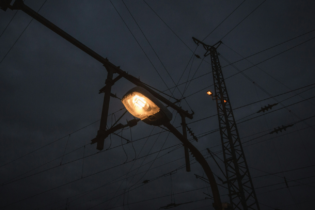By Andrew Etzinger
While the construction of Eskom’s three new power stations has attracted public interest, much less attention has been paid to a dedicated programme to reduce demand and help Eskom keep the lights on until the new power stations are on line. Demand-side management, which became the broader Integrated Demand Management (IDM) programme, has been a key component of Eskom’s success in avoiding load shedding since 2004. It’s cheaper, quicker and more environmentally friendly to save a megawatt of power than to build a power station to generate one. Eskom’s new power stations are going to be essential to power South Africa’s expanding economy, although the first units of the Medupi and Kusile power stations – under construction in Limpopo and Mpumalanga, respectively – will take some time to come on line.In the meantime, demand keeps rising over the long term. This is why Eskom’s strategy is to increase capacity while at the same time helping customers to reduce demand through the implementation of energy-efficient measures and encouraging them to move consumption out of the peak evening and morning periods. Since 2005, Eskom’s demand-side management programmes have yielded electricity saving totalling 3 587 MW. This is equivalent to the output of a “six pack” power station with six 600 MW generators. The demand-management initiatives have both a short-term focus – the need for rapid energy-savings responses from customers – and energy-efficiency marketing programmes that aim to change customer behaviour immediately and over the longer term. Changing customer behaviour is a crucial element, as South Africa is no longer a country with abundant or even excess electricity supply. At times, Eskom’s margin of supply over demand has been razor-thin, and it has only been the support of major customers, who have curtailed consumption in terms of agreements with Eskom, that has enabled Eskom to keep the lights on across the country. The power supply is likely to remain tight for the next few years – margins will remain slim until 2015 – and the situation will not really ease until 2017 when most of Medupi’s units will be on line and Kusile will have started supplying power to the grid. Even then, with the economy growing and industrial and residential demand rising, there won’t be a huge surplus of power. Eskom has said repeatedly that it is committed to avoiding load shedding and will do everything it can to keep the lights on, but that it cannot do it alone. That means that Eskom’s customers – residential, industrial and agricultural – will have to reduce electricity demand where possible, use electricity wisely by switching off unused lights and appliances as well as the geyser and swimming pool pump during evening peak period (between 5pm to 9pm). Installing energy-efficient lamps and equipment also goes a long way in reducing consumption.
Eskom’s Integrated Demand Management team has been helping customers do just this for the past 10 years. The IDM programme uses a combination of:
• energy-efficiency measures that allow a specific function to be fulfilled as usual, while using less electricity (by installing more efficient equipment or process optimisation)
• demand-management measures that shift electricity usage from a constrained or peak consumption period to a time when electricity is more readily available
• demand response measures that call on consumers to reduce consumption rapidly during critical periods to avoid blackouts. The role of and contribution from Integrated Demand Management
Since its inception, the focus of the IDM programme has changed from a predominantly small-scale demonstration and awareness-creation initiative to a concerted drive to reduce energy consumption measurably in light of the demand and supply inconsistencies. During the period from 2004 to 2013, the IDM programme has saved energy equivalent to a full year’s electricity consumption by the country’s capital, the City of Tshwane, in Gauteng. Demand-side management interventions also successfully contributed to alleviating critical supply constraints during both 2006 and 2008.
In addition, Eskom has also made use of extensive mass rollouts for specific technologies such as Compact Fluorescent Lamps (CFLs), Light Emitting Diode (LED) down lighters, geyser blankets, shower heads and timers, among others. With the Residential Mass Rollout Programme, several of these technologies are being combined under one mass rollout programme. South Africa’s Integrated Resource Plan, also known as IRP 2010 now incorporates a significant energy efficiency and demand management contribution to meet the forecasted electricity needs. In the financial year ended March 2013, demand savings of more than 590 MW were verified, of which 103 MW was achieved in the commercial sector. The total was made up of savings of 376 MW in residential areas and municipalities, 105 MW in the industrial and mining sectors, 103 MW in the commercial sector and 7 MW in agriculture.
All consumers are going to have to contribute if Eskom is to keep the lights on over the next few years. Eskom has published energy-saving tips on its website www.eskom.co.za/idm, and the IDM team is ready to help with expert advice.
Below are some of the ways to save electricity. Domestic users can adopt the following measures:Fitting Compact Fluorescent Lamps (CFL) – Compared to general-service incandescent lamps giving the same amount of visible light, CFLs use one-fifth to one-third the electric power, and last six to 15 times longer. A CFL has a higher purchase price than an incandescent lamp, but can save over five times its purchase price in electricity costs over the lamp’s lifetime. Fitting Light Emitting Diode (LED) down lighters – LEDs have many advantages over incandescent light sources, including lower energy consumption, a longer lifespan, improved physical robustness, smaller size and faster switching. Using more energy efficient water heating technologies such as heat pumps and solar water heating systems – A heat pump offers you a way to use electricity to heat water efficiently. Where a geyser uses three units of electrical energy to produce three units of heat energy, a heat pump converts just one unit of electrical energy into three units of heat energy. Solar power is one of the most effective renewable energy sources available. By implementing it in water heating, we can target one of the most power-intensive household activities for maximum power-saving effect. Using shower heads and timers – By simply changing a shower head to an energy efficient model, the consumer can save litres of water a day. Commercial users can adopt the following measures:
Policy – Companies can adopt a workplace energy-efficiency policy to encourage employees to use energy in a thoughtful manner. Turning off equipment – The computer may go to sleep, but it’s still sucking up energy. All computers should be turned off at the end of the day. Don’t leave equipment on standby mode. They continue to use up to 50% of normal power consumption at no use. Printers – Where appropriate, use inkjet printers because they consume 90% less energy than laser printers.
Control air conditioners – During the day, keep doors and windows closed while the air-con is on. Early mornings, open doors and windows to allow cool air to escape and warm air to flow in. In the kitchen – Most workplace coffee makers use more energy than one would think, especially those with a hot-water tank inside that remains hot 24/7. For those coffee makers, use a timer that will turn off the power overnight and turn it back on early in the morning so that the water is hot before the first coffee drinker arrives. Light sensors – Install occupancy sensors instead of indoor light switches in offices. A preferred technology in recent years is a light switch that occupants turn on when desired, and the sensor will turn it off if the room is vacant. Outdoor lights – Ensure that parking lot and outdoor lights are turned on only when needed. Install or fine tune occupancy sensors and/or photocells. Replace outdoor lights with LEDs with good controls. Solar power – Investing in solar power systems in the business will help save electricity bills and help the environment.
Increased economic activity also results in more employment opportunities. Economic data indicate that for every hour without electricity supply, the country risks losing 235 jobs. This means it is in everybody’s interest to continue to save electricity. Effective communication is also a large part of intelligent electricity usage. Various communication channels are used to influence and reduce consumption at times of severe constraint. Power alerts are distributed on TV, radio and online. So when an alert is issued, please comply and help us save!








